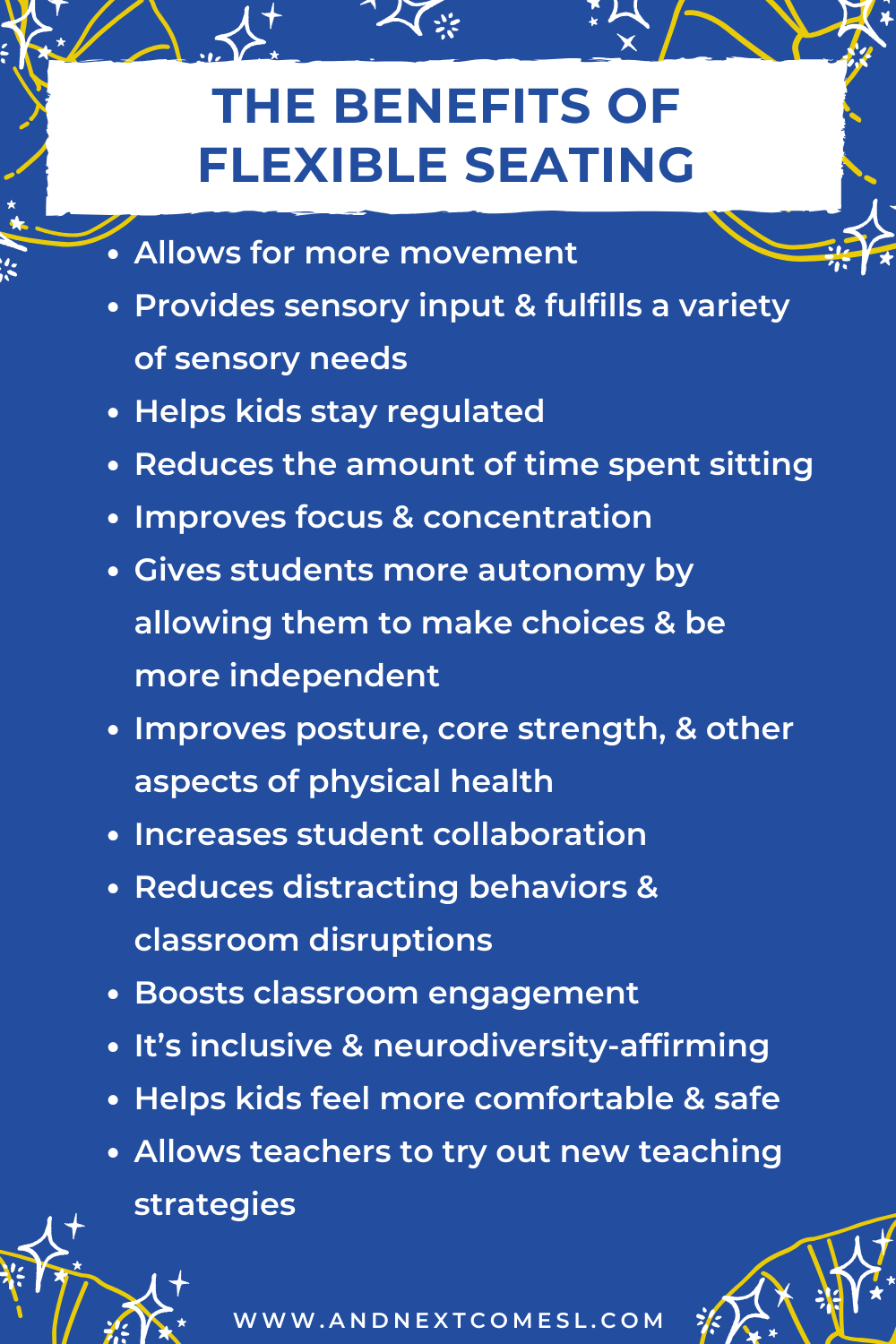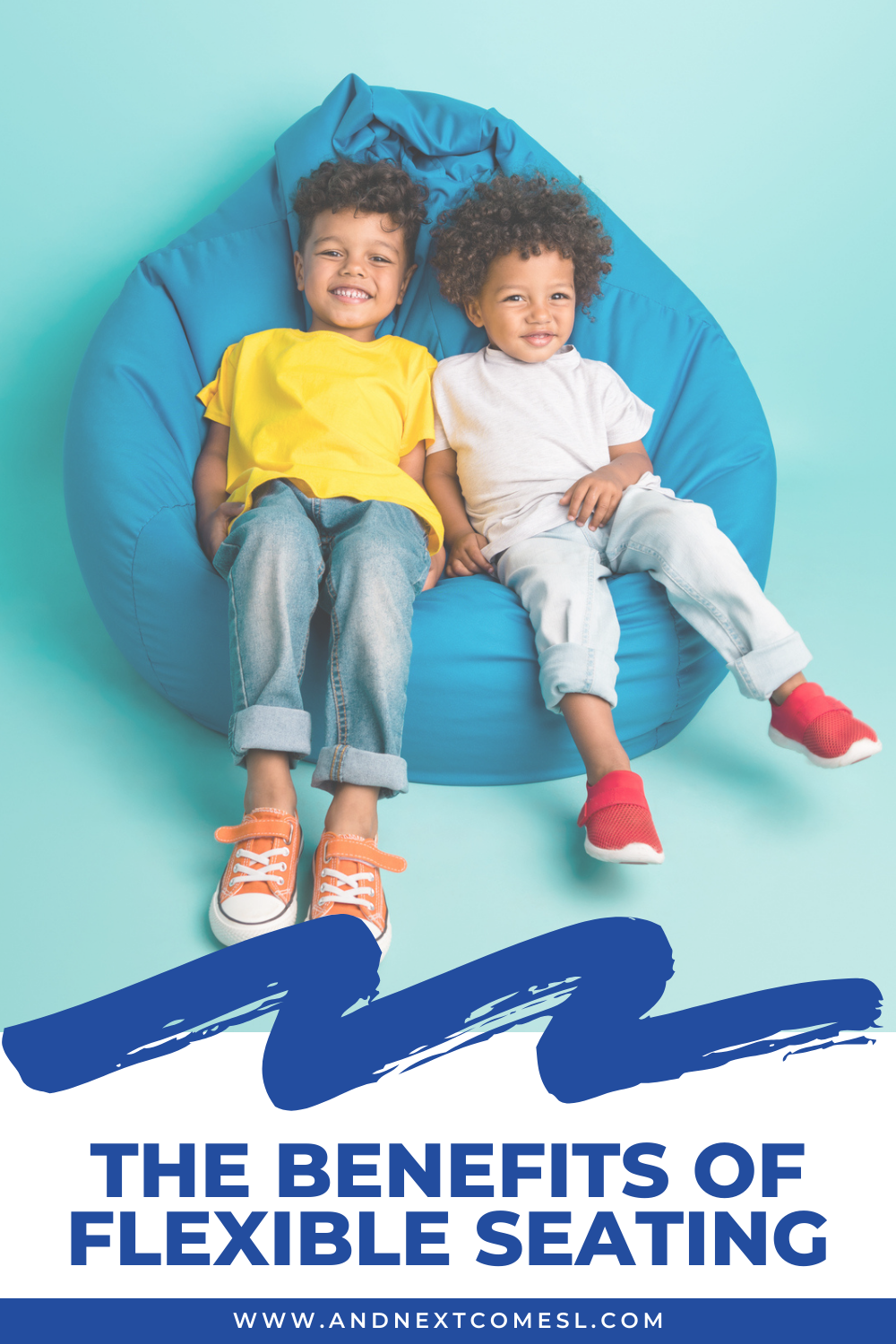Once you know what flexible seating is, as well as the pros and cons, it's helpful to look at the benefits to using different seating options in the classroom. And there are certainly a lot of benefits, as you will see.
We saw some of these benefits first hand when my oldest son was in kindergarten. Or was it grade one? I can't keep all of those younger years straight any more...
Anyway, the school was able to provide him with an orange and gray wobble/balance stool and, goodness, did it ever help him stay focused and well regulated. As a vestibular sensory seeker who loved to spin and swing, that stool really helped him get his sensory needs met in the classroom.
So let's take a closer look at what some of those benefits of flexible seating might be. You know, beyond meeting a child's sensory needs like I mentioned.
Benefits of Flexible Seating
You'll notice that there a wide range of benefits on the following list, from meeting sensory needs to improving classroom performance and physical health. It really does help in a variety of areas.
Sure, most of the benefits on this list are student-oriented. However, there are actually a lot of benefits for teachers as well.
Here are just some of the benefits of using flexible seating in the classroom:
- Allows for more movement
- Provides sensory input and fulfills a variety of sensory needs
- Helps kids stay regulated (often because their sensory needs are being met)
- Reduces the amount of time spent sitting (i.e., you can switch things up by laying on the floor, kneeling, rocking, bouncing, standing, etc.)
- Improves focus and concentration (remember, not all kids learn best sitting still or learning at a traditional desk)
- Gives students more autonomy by allowing them to make choices and be more independent (i.e., they can sit where and how they want)
- Improves posture, core strength, and other aspects of physical health
- Increases student collaboration (e.g., they can sit on a couch with other students when working together on an assignment)
- Reduces distracting behaviors and classroom disruptions (after all, their needs are being better met and supported and the students are more regulated)
- Boosts classroom engagement (e.g., they no longer have to focus on trying to sit still and can instead focus on listening to the teacher)
- It's inclusive and neurodiversity-affirming (i.e., there is something for everyone, considers different learning styles, no child feels singled out because they use a different chair, meets a wide variety of needs, etc.)
- Helps kids feel more comfortable and safe (e.g., they can sit where and how is most comfortable to them, which will reduce the need to mask at school)
- Allows teachers to try out new teaching strategies
Keep in mind that this list is just a starting point. There are lots of other potential benefits to using flexible seating in your classroom so you might think of some other ideas that aren't included above.
Flexible Seating Benefits: A Quick Recap
Once you start incorporating some flexible seating in your classroom, you're likely to notice a lot of benefits.
Not only is it an inclusive practice, but offering flexible seating can help kids stay better regulated. And that means fewer behavior problems or disruptions and an improvement in classroom engagement. It's a win, win really.
Students will also feel more comfortable and safe, not only because they're better supported and well regulated, but because they'll have more autonomy and independence. They'll love having more flexibility and freedom to make choices when it comes to how they're learning in the classroom.
Hopefully, learning about these flexible seating benefits will give you some encouragement to give it a try and incorporate it into your classroom.
Or, at the very least, help you better understand why it's being recommended as an accommodation in a student's IEP.





